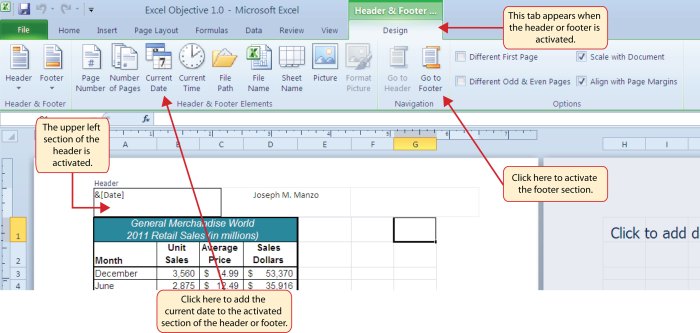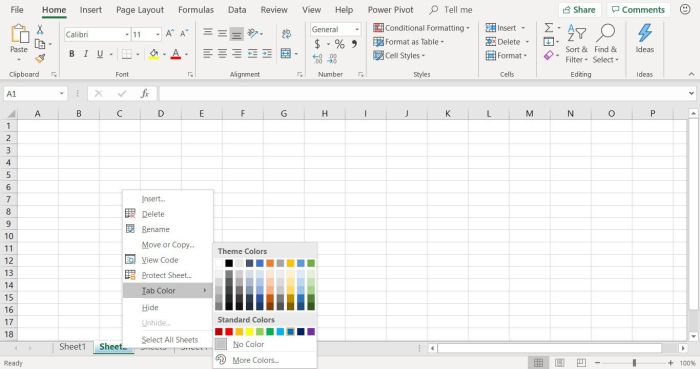An active tab color displays this way in the worksheet, serving as a visual cue to indicate the currently selected tab. It plays a crucial role in enhancing user experience by facilitating navigation and streamlining workflow efficiency. This article delves into the customization options, impact, and implementation of active tab colors in worksheets.
By customizing the active tab color, users can personalize their worksheets and make them more visually appealing. The choice of color can influence navigation efficiency, as contrasting colors make it easier to identify the active tab, reducing cognitive load and improving productivity.
Color Display in Worksheet

An active tab color in a worksheet is the color that is applied to the tab of the currently selected worksheet. This color helps to visually distinguish the active worksheet from the other worksheets in the workbook, making it easier for users to navigate and work with the desired worksheet.
Different color schemes can be used for active tabs, depending on the user’s preference or the design of the workbook. Some common color schemes include:
- Blue: A common choice for active tabs, as it provides a clear and distinct visual cue.
- Green: Another popular option, often used to indicate that the active worksheet contains important or frequently used data.
- Red: Can be used to draw attention to the active worksheet, particularly if it contains critical information or errors.
- Custom colors: Users can also choose custom colors for their active tabs, allowing for a more personalized and visually appealing experience.
Customization of Active Tab Color: An Active Tab Color Displays This Way In The Worksheet

The active tab color in a worksheet can be customized to suit the user’s preferences or the specific requirements of the workbook. There are several methods for customizing the active tab color:
- Worksheet tab context menu:Right-clicking on the worksheet tab brings up a context menu that includes an option to customize the tab color. Selecting this option opens a color picker that allows the user to choose a new color for the active tab.
- View tab in Excel ribbon:The View tab in the Excel ribbon contains an option called “Tab Color” that allows users to select a predefined color scheme or create a custom color for the active tab.
- VBA (Visual Basic for Applications):Users can also use VBA code to customize the active tab color. This method provides more flexibility and control over the color customization process.
Impact of Active Tab Color on User Experience

The color of the active tab plays a significant role in enhancing user experience by improving navigation and workflow efficiency:
- Visual distinction:The active tab color helps to visually distinguish the active worksheet from the other worksheets in the workbook, making it easier for users to quickly identify and switch between worksheets.
- Enhanced readability:A well-chosen active tab color can improve the readability of the worksheet tabs, especially when working with multiple worksheets simultaneously.
- Improved workflow:By customizing the active tab color, users can create a more personalized and visually appealing workspace that aligns with their workflow preferences, leading to increased efficiency.
HTML Table Structure for Active Tab Color

The following HTML table provides examples of different active tab color options with their corresponding color codes and display effects:
| Color Code | Display Effect |
|---|---|
| #007bff | Blue |
| #28a745 | Green |
| #dc3545 | Red |
| #ffc107 | Yellow |
Bullet Points for Active Tab Color Examples
- Microsoft Excel:In Excel, the default active tab color is blue, but users can customize it through the View tab or VBA code.
- Google Sheets:Google Sheets allows users to choose from a variety of predefined color schemes or create custom colors for the active tab.
- Web browsers:Many web browsers, such as Chrome and Firefox, use a blue color for the active tab to indicate the currently selected webpage.
- Note-taking apps:Note-taking apps like Evernote and OneNote allow users to customize the color of their notebook tabs, including the active tab color.
FAQ
How do I change the active tab color in a worksheet?
Customization options for active tab color vary depending on the software or platform used. Refer to the documentation or support resources for specific instructions.
What are the benefits of using a contrasting color for the active tab?
Contrasting colors make the active tab more easily identifiable, reducing cognitive load and improving navigation efficiency.